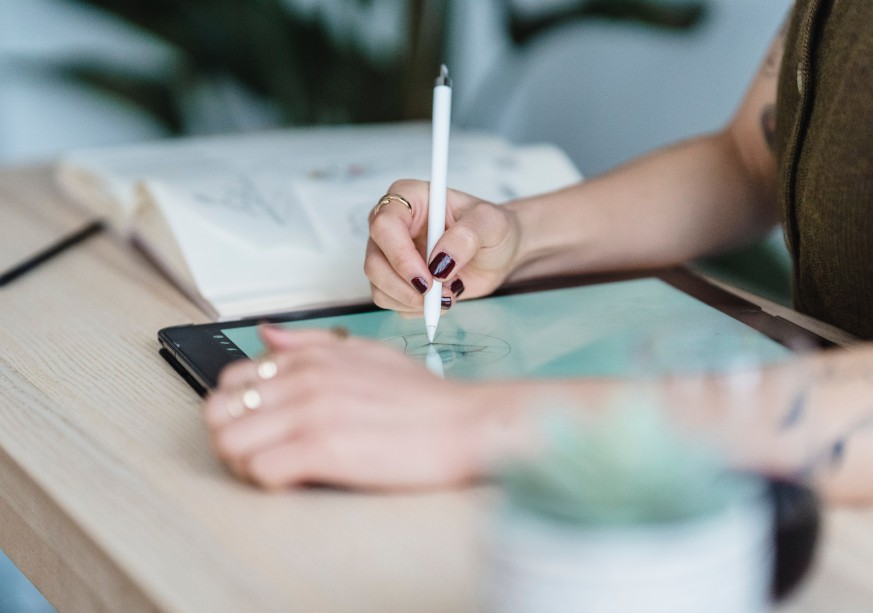
Explore our NEW Knowledge Base and Help Desk to find everything you need to attract, engage and convert talent with your Vennture website.
Discover More
Design discovery meetings are essential to any successful recruitment web design process. They provide an opportunity for designers, stakeholders, and team members to come together and explore project goals, user needs, and creative solutions. During these meetings, teams can discuss project requirements, brainstorm ideas, and identify potential challenges.
Discovery meetings set the tone for the rest of the design process, providing a foundation of understanding that guides the work ahead. They allow designers to gain insight into the user's perspective and effectively create designs that meet their needs and the needs of their candidates and clients. They also help to align team members and stakeholders on project goals, timelines, and expectations.
Whether you’re in the early stages of a web design project or considering taking on a project, we want to help you prepare to get the most out of your initial design call and, therefore, your new site. In this blog, we will explore the importance of design discovery meetings, what you can do to prepare and what to expect when embarking on a new website design project.
First things first, when we say discovery call, what do we mean? A discovery or design call is a business's first interaction or conversation with a website provider or marketing agency. These calls include the business's key stakeholders, a web designer, and typically a project manager. This initial conversation is a critical part of the web design process, kicking off the project and allowing those involved to discover your business goals, objectives, pain points, and vision for the project.
These meetings are vital for information gathering and will inform the initial design concepts, ensuring the project's success.
In terms of a design discovery call, the designer's role is to understand who the client is and their business needs. The designer will reiterate similar questions that have already been asked by sales or project managers; however, a designer listens to a different part of the answer.
These meetings are an opportunity for you as the business to put forward your vision for the website. At this point, your role is to come prepared and ensure the designers and project managers have all the information they need.
A thorough design discovery is important to establish clear design briefs, brand strategy, mission, and objective. The call isn’t an interrogation and instead should be used as a friendly discussion about evolving the current aesthetic and functionality. It is an opportunity to bring value back to your recruitment website.
Most discovery calls will start the same. The designer will introduce themselves and outline the purpose behind the call. It is vital to initiate confidence and trust between the client and designer, at the end of the day, the designers are the experts and, therefore, need your trust to be able to take your vision and run with it. There will be times when your designer offers suggestions and probes you for certain bits of information. This isn’t their first project; therefore, they’ll understand what works, what doesn’t, and what is best practice for your industry.
While it’s up to you to provide business information, the designer must translate this and explain the process to you. The designer should ask open-ended questions to encourage the prospect to provide detailed answers. Here’s an example of the type of questions you’ll get asked.
Our best piece of advice for any recruitment agency about to embark on a web design project is preparation. Brands often underestimate this first session's importance and how much it influences your initial design concepts and end design. It is also easy to create confusion if your business goals are not aligned or you don’t know how to communicate them.
Having a clear agreement of what you want to achieve between your stakeholders will save you a lot of time and energy. It's common for different stakeholders to have different opinions. For example, a marketing manager will want to prioritise usability and brand identity, whereas a business owner will be more concerned with the ROI and how the website will bring in revenue for the business. While both these opinions will be influential, it's important that expectations are aligned and that your personal desires don’t take over.
This meeting should be a conversation. Yes, you will be doing most of the talking to begin with, while the designer learns more about you, but the designers and project managers will help guide you in the right direction. Don’t be alarmed if a designer probes a bit deeper and asks ‘why?’
At the end of the day, a website provider wants to build you a site that performs, so they will consider best practice UX and explain their approach. Sometimes they might suggest alternative approaches and challenge your vision to meet your goals and make the site a success. As the project progresses, designers will refer back to this session to ensure no one is getting off track.
Along with prepping for the questions above, follow the process below to ensure you are prepared.
Preparing what you will say to the designer is crucial as it allows the designer to communicate the brand more effectively in the website concepts. While stating who you are and what you do, it is just as important to emphasise your goals and expectations during the call. It's much better for the designer to hear about the business in your own words. The designer could be inspired by hearing it from you and picking up key terms for potential headings/imagery choices.
Recruitment agencies face various challenges, including a highly competitive market, changing industry trends, and fluctuating demand for talent. Understanding where your current website is not performing will help you create a new, optimised destination. Say your current site is not converting candidates, and you’re struggling to gain talent through the website. Equally, you could need a site that attracts clients and supports your lead generation. Narrowing down these pain points and challenges helps us hone in on what you want to achieve, building a design that can help you excel.
Knowing your audience is vital to a successful design. Building a site based on the people you’re trying to reach will always be more effective than replicating whatever catches your eye. Try to understand your competitors, differentiate yourself in the market, and identify opportunities for growth. What are your strengths? What could be improved? Is your audience going to be the same once the website goes live?
Ahead of the call, we advise that you gather website design inspiration to direct the designer to themes you like and don’t like. This will help to reduce potential amendments and pushbacks, enabling the design process to run smoothly. Look for inspiration inside the recruitment industry and outside. Look for websites that you enjoy using and brands that inspire you; this is a great place to start. The significance of website design for recruitment is to stand out from the crowd. There is no shortage of recruitment agencies, so what makes you different? What is going to engage your clients/candidates online?
Established recruitment agencies will already have branding and guidelines in place. This will include things like colours, fonts, and imagery. It may be that you are also going through a rebrand in line with a new website, but even so, it’s important to share any existing documentation with your designers. Start with the basics and gather all logo files (preferably in PNG or SVG formats), brand colours, and typography. Do you have a brand personality or tone of voice document?
Utilise this time and the skill of the professional to your advantage, and take advice on how existing elements could be elevated further in the web design.
There are so many places you can take inspiration, whether from your latest online shop or a supplier you work with. Everywhere you look, there will be elements, functionality, and creative thinking that you can adopt for your own project. Finding inspiration is as simple as a Google search. Think about some of your favourite brands, whether they are in or outside of recruitment. Take the time to experience their website and make a note of what you like and, more importantly, what you don't like.
Design is about more than just the images and branding. It's also about the user experience and the journey users will go on. So think about functionality and features that you think improve a customer journey, this could be a small detail like search bar autocomplete or a page banner. At this stage, designers start to map out the page journey based on who your users are, with best practice visual hierarchy in mind, so anything you can bring to the table will be helpful.
For design inspiration, there are a few go-to places that can help you get the ball rolling; these include:
While the designer will take your inspiration onboard, it is important to understand that they will not replicate design elements if not deemed necessary. When finding inspiration, it is important to differentiate between what you like and what your clients/candidates are going to like. The user is going to be more focused on the functionality and substance rather than if the buttons are blue or orange.
Preparing for a design discovery call is crucial for both designers and clients. It provides an opportunity to establish a clear understanding of the project's needs. By taking the time to prepare for the call, designers and clients can set themselves up for a successful, data-driven project.
As the call concludes, the designer should reiterate the problems raised and how the new website will resolve and refresh the brand presence online. This is your opportunity to raise last-minute concerns and seek information on what happens next.
If you are looking for guidance on how to evolve your website's performance and be involved in empowering your discovery calls, speak to one of our experts today. At Venn, we design and build flexible recruitment websites with custom web designs backed by powerful recruitment technology and optimised for results. Explore our Recruitment Website Design Services for more information.